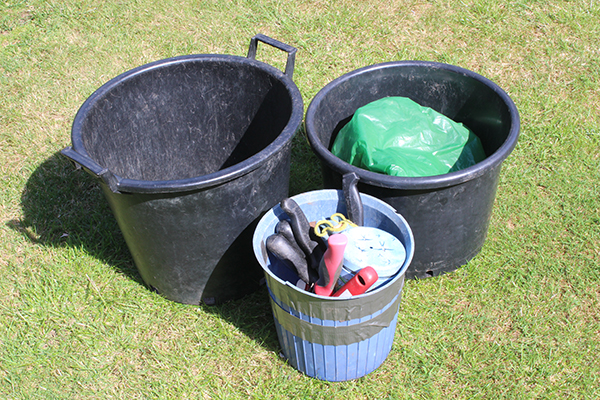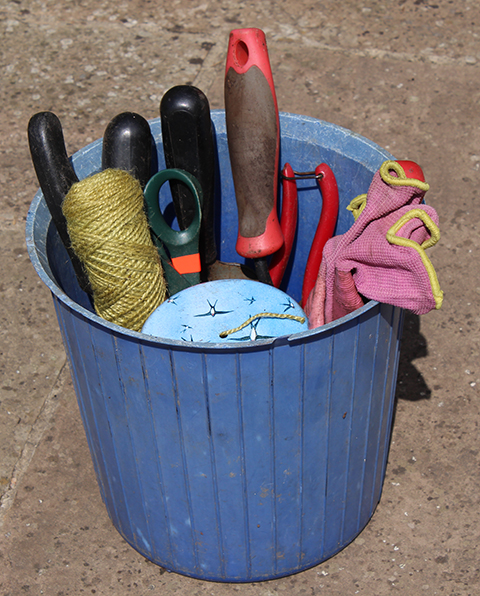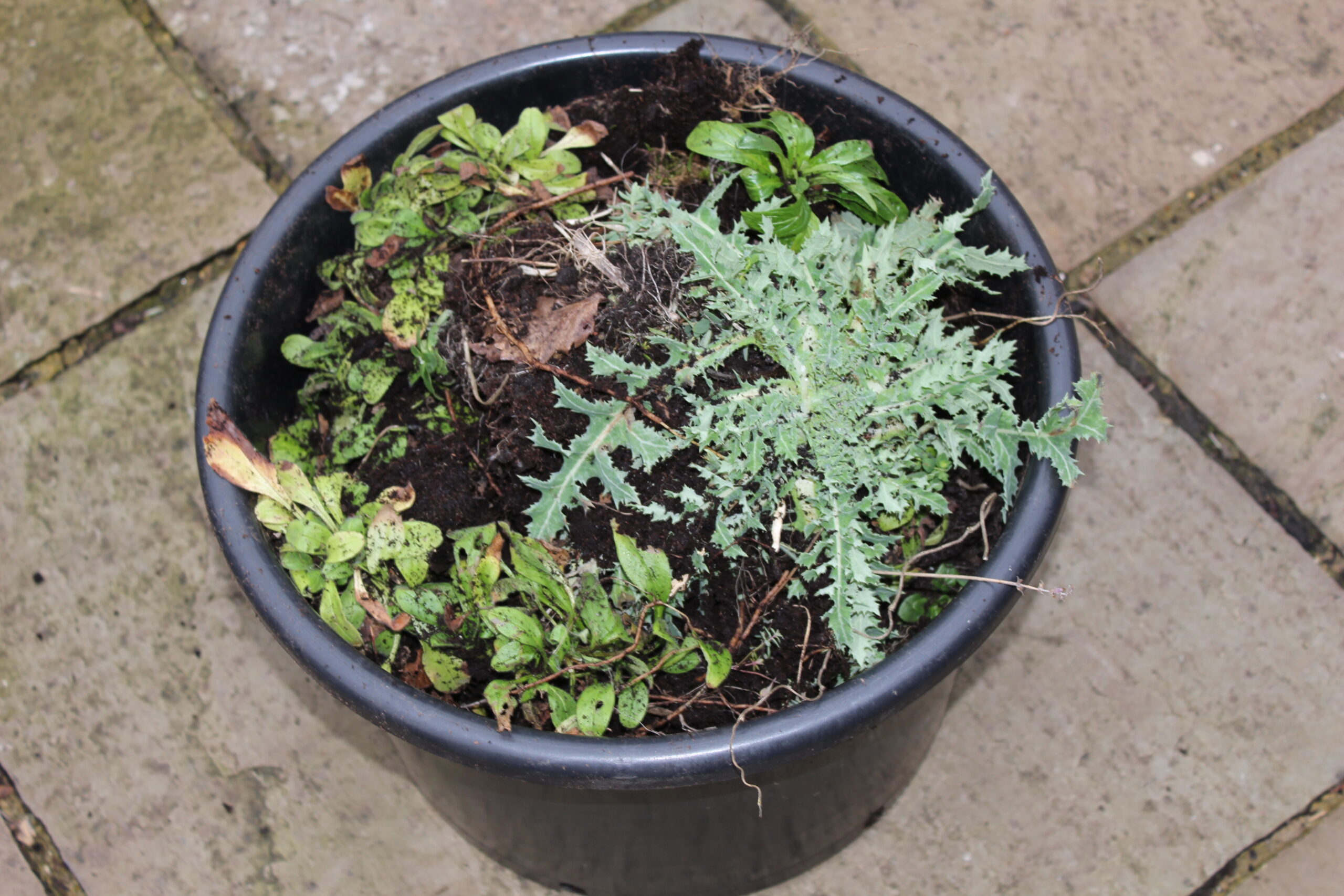
You can do anything for 15 minutes … even gardening. But for it to work, you will need to put your hands on your most essential gardening tools … quickly.
Trust me, if you have to hunt around for your tools every time you want to pop into the garden for 15 minutes of weeding, pruning or planting, you won’t do it !!!
My 15-minute system requires 3 buckets (or alternative containers):
- A bucket of essential tools
- A bucket for weeds
- A bucket for compost or compostable/shreddable materials

1. The tool bucket

My 15-minute tool kit comprises:
- gardening gloves
- scissors (for dead heading)
- secateurs (for pruning)
- trowel and fork (for weeding)
- twine (for tying up stray plants)
- dibber and fork (for sowing seeds/pricking out seedlings)
- an old bread knife (handy when dividing perennials)
- a pot of Growmore fertilizer.

You’ll find what’s essential for you; for example, if you don’t grow climbers or perennials you probably won’t need garden twine. And you don’t have to use a bucket – you might prefer a tool belt or a bag.
Work out which tools you find most useful for your day-to-day gardening and keep them together in a handy container that you can carry with you around the garden.
Of course, some jobs will require tools that won’t fit in a bucket or tool belt – for example, a rake or spade (so make sure you know where those are too) – but most 15-minute gardening tasks can be achieved with the tools above.
2. The weed bucket
My second bucket is for the weeds that will ultimately get put out in the garden rubbish. It’s great to have a bucket to hand any time I feel like doing a few minutes of weeding.

3. The compost bucket
My third and biggest bucket is for collecting materials that I can compost or shred – so that I can keep the useful plant material separate from the weeds (particularly useful in Spring and Autumn when tidying up).

I also sometimes fill this bucket up with garden compost if I’m mulching, potting or planting.
3 buckets, 3 bags, 3 baskets …
If you’ve only got 15 minutes, you don’t want to waste time looking for tools or running backwards and forwards to your compost or garden waste bins.
Find what works for you. You could, for example, use a tool belt and a couple of bags, or baskets, or whatever. The important thing is to ensure that the tools and containers you use most often are all together in one place, easy to grab when you want them and easy to carry around the garden.
